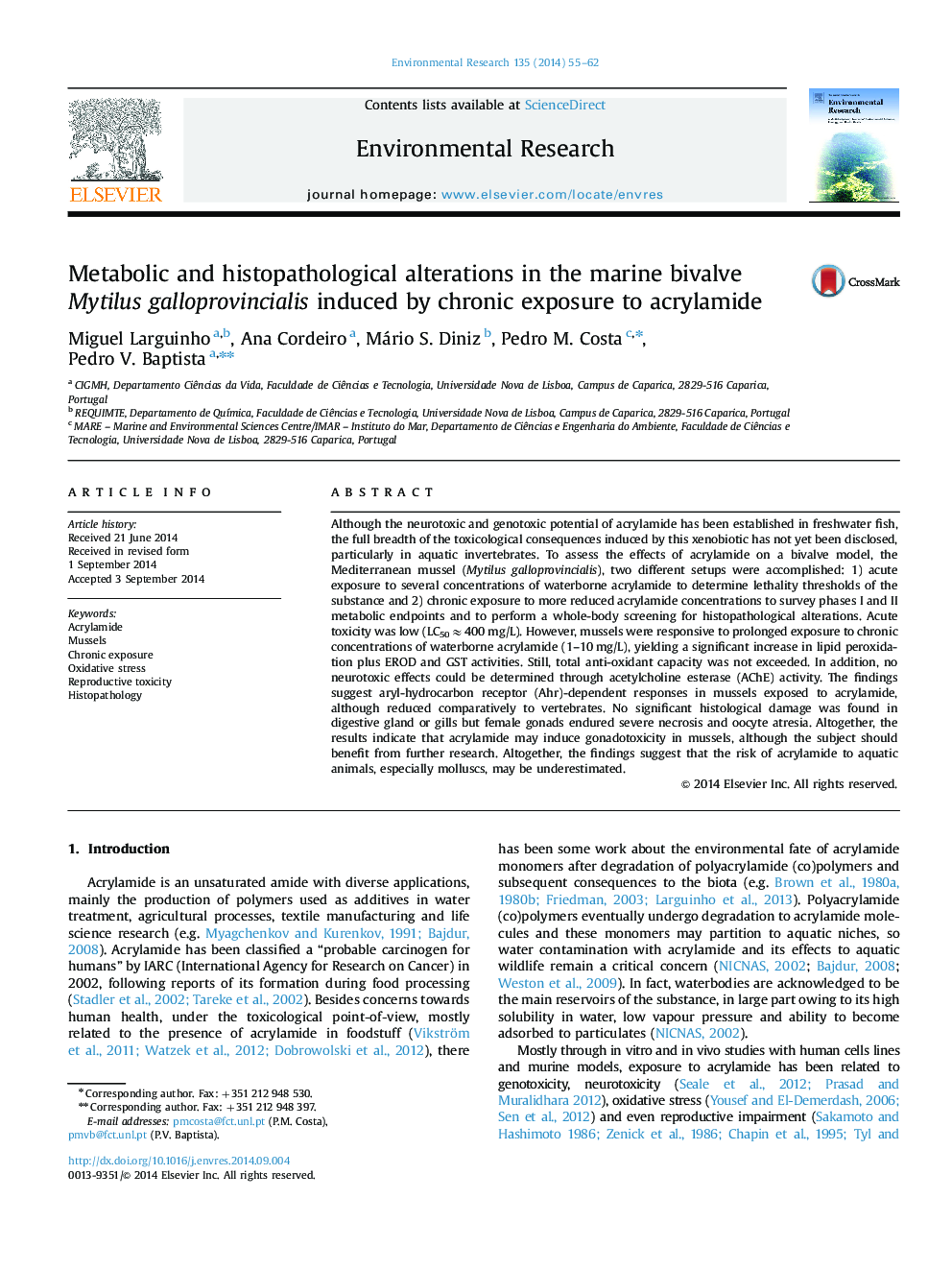| کد مقاله | کد نشریه | سال انتشار | مقاله انگلیسی | نسخه تمام متن |
|---|---|---|---|---|
| 6352916 | 1622566 | 2014 | 8 صفحه PDF | دانلود رایگان |
عنوان انگلیسی مقاله ISI
Metabolic and histopathological alterations in the marine bivalve Mytilus galloprovincialis induced by chronic exposure to acrylamide
دانلود مقاله + سفارش ترجمه
دانلود مقاله ISI انگلیسی
رایگان برای ایرانیان
کلمات کلیدی
موضوعات مرتبط
علوم زیستی و بیوفناوری
علوم محیط زیست
بهداشت، سم شناسی و جهش زایی
پیش نمایش صفحه اول مقاله

چکیده انگلیسی
Although the neurotoxic and genotoxic potential of acrylamide has been established in freshwater fish, the full breadth of the toxicological consequences induced by this xenobiotic has not yet been disclosed, particularly in aquatic invertebrates. To assess the effects of acrylamide on a bivalve model, the Mediterranean mussel (Mytilus galloprovincialis), two different setups were accomplished: 1) acute exposure to several concentrations of waterborne acrylamide to determine lethality thresholds of the substance and 2) chronic exposure to more reduced acrylamide concentrations to survey phases I and II metabolic endpoints and to perform a whole-body screening for histopathological alterations. Acute toxicity was low (LC50â400Â mg/L). However, mussels were responsive to prolonged exposure to chronic concentrations of waterborne acrylamide (1-10Â mg/L), yielding a significant increase in lipid peroxidation plus EROD and GST activities. Still, total anti-oxidant capacity was not exceeded. In addition, no neurotoxic effects could be determined through acetylcholine esterase (AChE) activity. The findings suggest aryl-hydrocarbon receptor (Ahr)-dependent responses in mussels exposed to acrylamide, although reduced comparatively to vertebrates. No significant histological damage was found in digestive gland or gills but female gonads endured severe necrosis and oocyte atresia. Altogether, the results indicate that acrylamide may induce gonadotoxicity in mussels, although the subject should benefit from further research. Altogether, the findings suggest that the risk of acrylamide to aquatic animals, especially molluscs, may be underestimated.
ناشر
Database: Elsevier - ScienceDirect (ساینس دایرکت)
Journal: Environmental Research - Volume 135, November 2014, Pages 55-62
Journal: Environmental Research - Volume 135, November 2014, Pages 55-62
نویسندگان
Miguel Larguinho, Ana Cordeiro, Mário S. Diniz, Pedro M. Costa, Pedro V. Baptista,